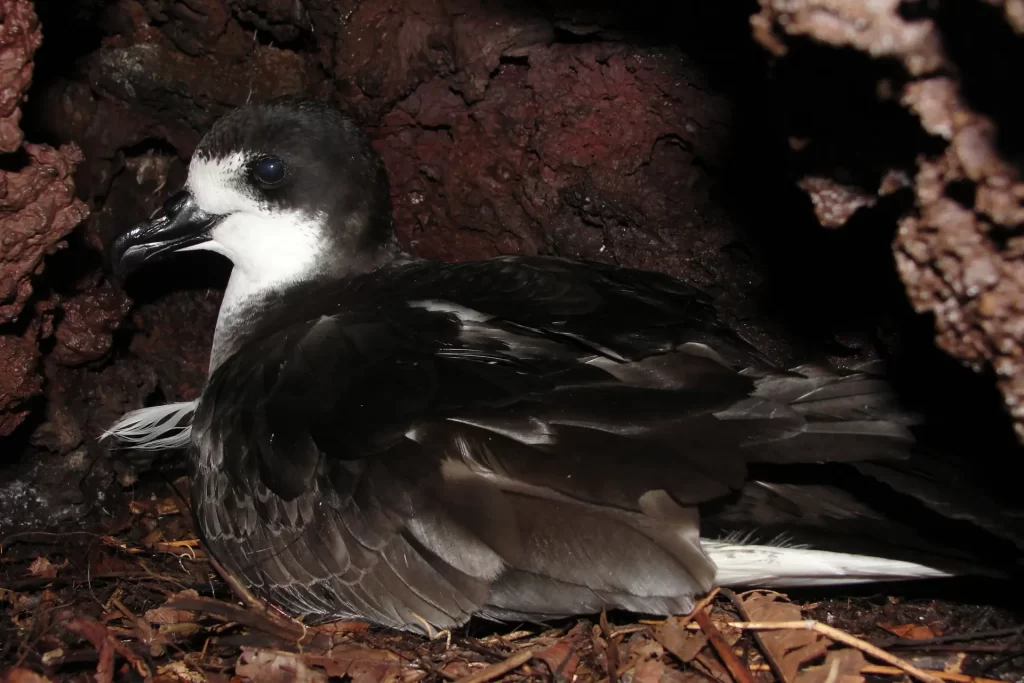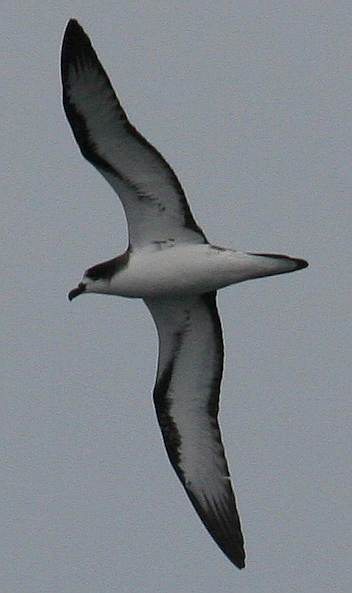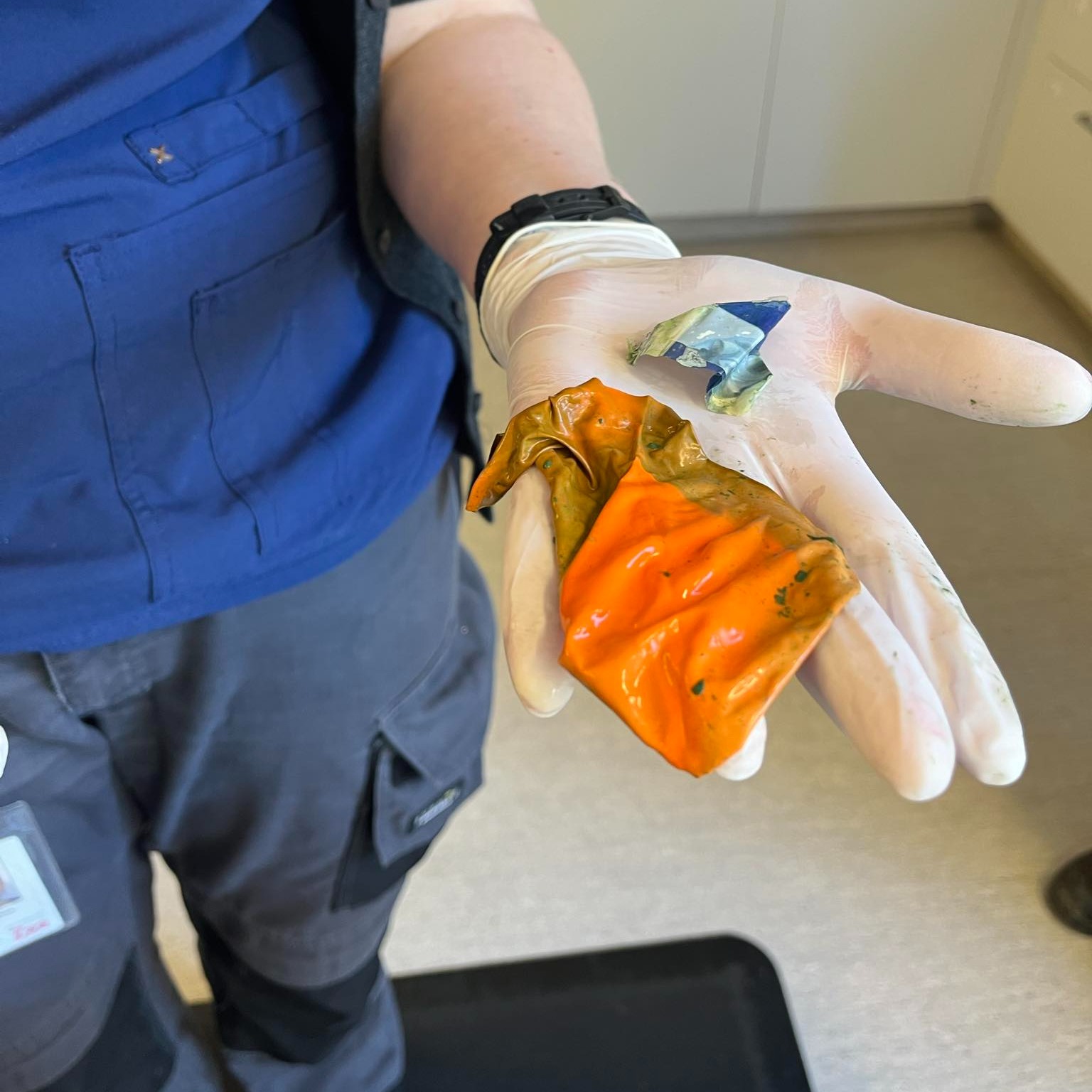 “A piece of plastic wrapper and part of an orange balloon” removed from the juvenile Black-browed Albatross, photograph from the Wellington Zoo Te Nukuao
“A piece of plastic wrapper and part of an orange balloon” removed from the juvenile Black-browed Albatross, photograph from the Wellington Zoo Te Nukuao
In April this year a juvenile Black-browed Albatross Thalassarche melanophris was found in poor condition near New Zealand’s Wellington Airport and taken to The Nest Te Kōhanga, Wellington Zoo’s animal hospital, as reported on the Zoo’s Facebook Page.
“The juvenile albatross was very weak, and our vets put him on pain relief, fluids, and a diet of fish slurry. Blood tests came back normal, and the albatross was put under general anaesthetic so our vet team could take a full set of X-rays. To check whether this albatross had any plastic in his stomach, our vets performed an endoscopy, sending a camera down his throat to look around his gut.” A piece of plastic wrapper and part of an orange balloon were then removed from its stomach.

Performing the endoscopy, photograph from the Wellington Zoo Te Nukuao
In mid-May a team from The Nest Te Kōhanga took a boat ride out to the middle of the Cook Strait to release the recovered Black-browed Albatross at sea. Watch a video of its release here.
Access earlier articles in ACAP Latest News of balloons ingested by ACAP-listed albatrosses and petrels here. "Plastic Pollution" was ACAP's theme for World Albatross Day on 19 June 2023.
John Cooper, Emeritus Information Officer, Agreement on the Conservation of Albatrosses and Petrels, 28 May 2024

 English
English  Français
Français  Español
Español  A White-capped Albatross breeding on
A White-capped Albatross breeding on 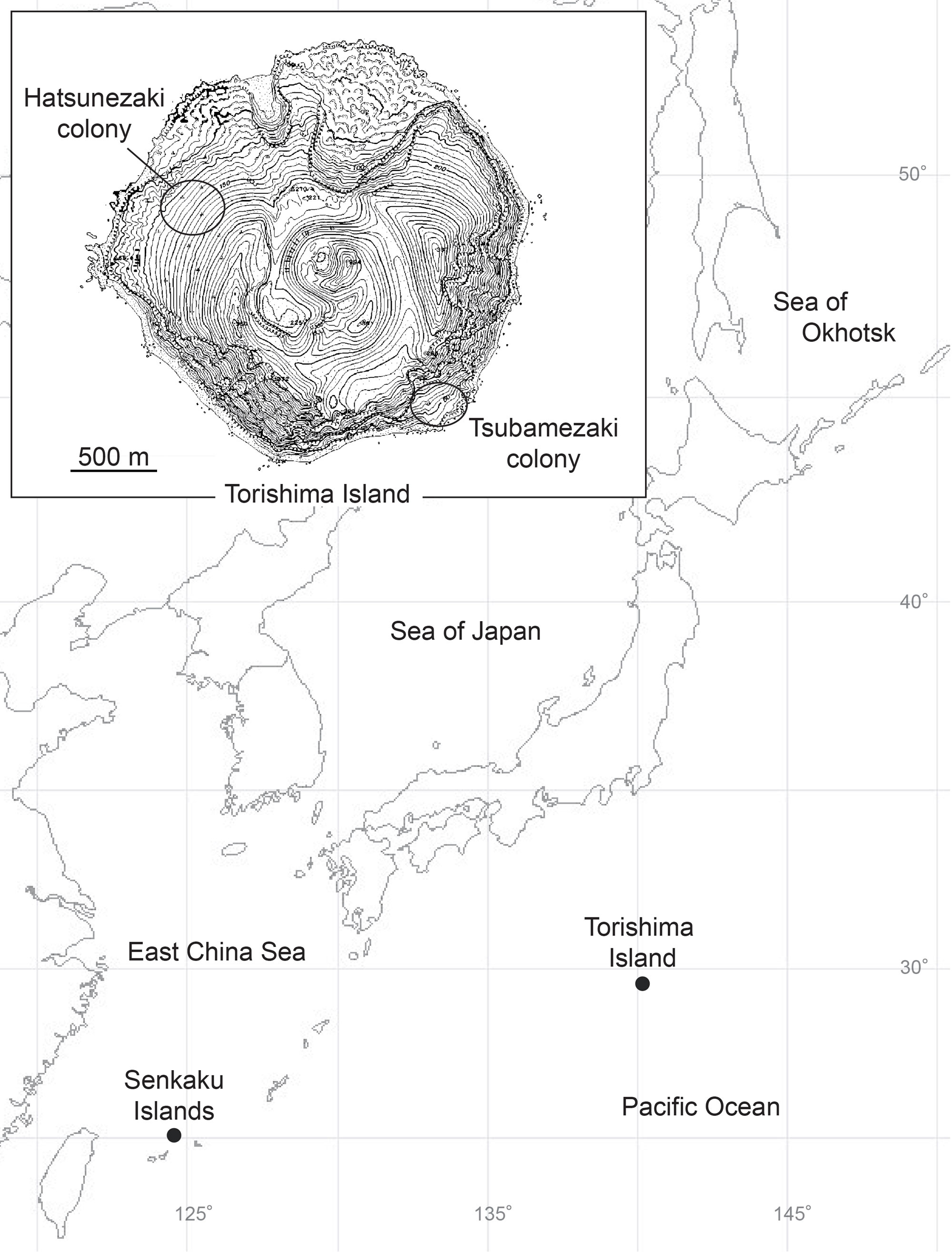


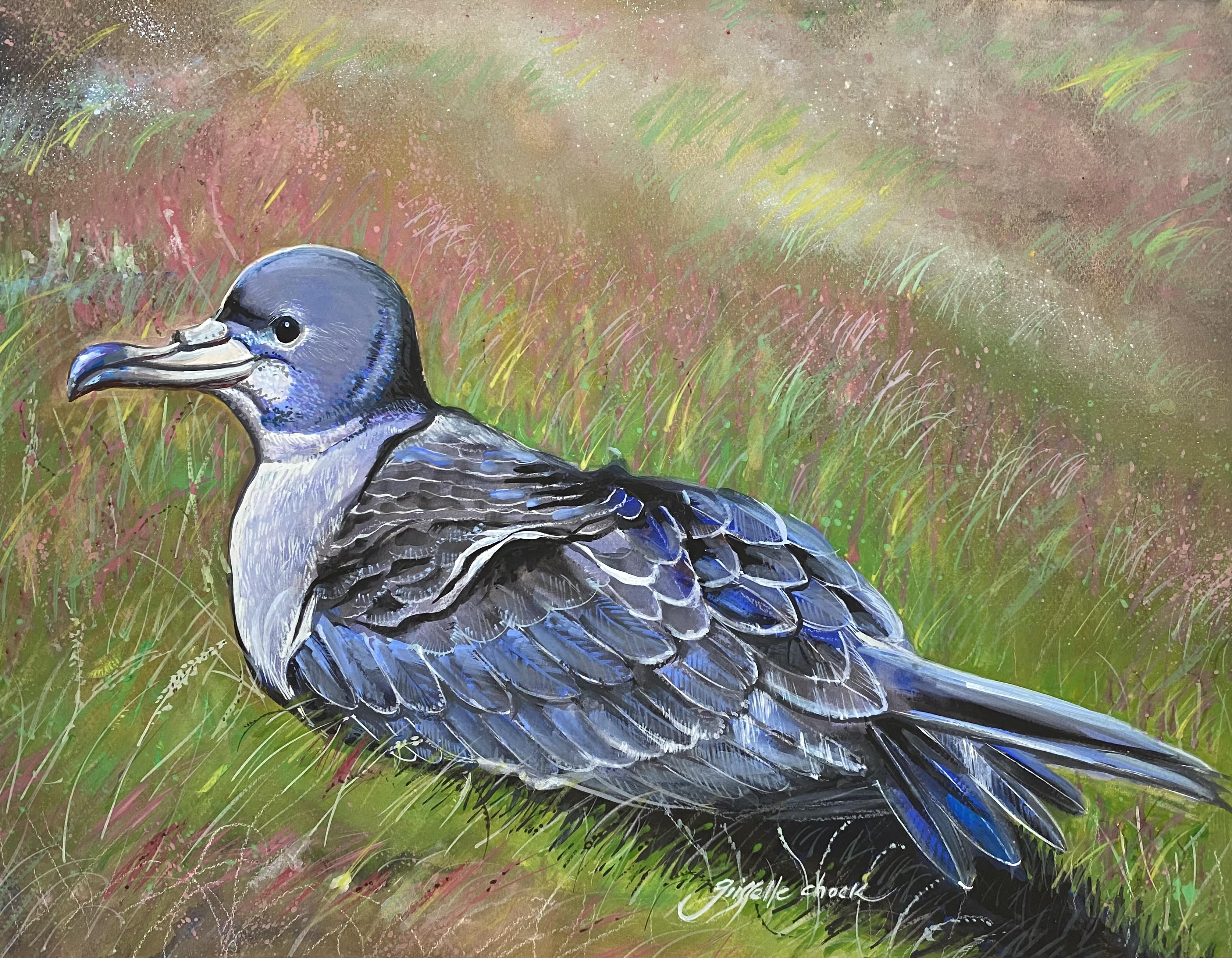 Pink-footed Shearwater, gouache watercolour for ACAP by
Pink-footed Shearwater, gouache watercolour for ACAP by 